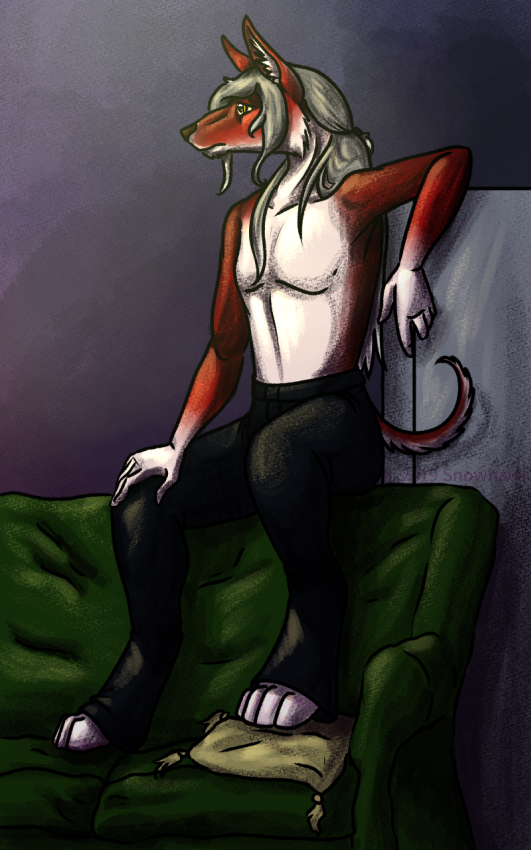

The following entry is not specifically a species, but a sub-category of delphin, lupino, and feln.
Many years before the delphin empire came to power, experiments using avizon venom led to the creation of vampires. These are atypical from common folkloric vampires, having little to no aversion to things like the sun, crosses, and garlic. Any that are are a personal preference.
These creatures are more resilient than their non-turned counterparts, and it’s unknown why they were made, but for soldiers is the common theory. They have been known to regenerate limbs lost, and killing one is extremely difficult.
Vampires are rare. They can pass along their gift to new generations, but it seems like this dilutes the abilities of the previous one. The strongest vampire is the oldest one and first surviving of the experiments, and their powers do not tend to grow stronger with age. This vampire passed his gift onto a few individuals, though only one is known to still be alive (see above image).
They do have a craving for blood, but animal blood can suffice, should they wish to feed in that manner. If they feed on another anthro, they rarely will kill them, unless it’s to hide their nature. Without blood for several weeks, they can “frenzy” and lose control of themselves until they’re sated. Going longer than this may cause them to go into a hibernation-like state until blood is given to them.
As the avizon’s venom played a role in creating them, they are immune to the effects of the vampire’s bite.
Effects of the bites can include being able to control the victim, seeing through the victim’s eyes, having a mental link to the victim, and a reduction in the victim’s blood being able to clot for several days. These effects come from residual toxin on their fangs, and is a non-exhaustive list.
A vampire’s bite will only turn a victim if they actually inject their venom. Most bites are safe from this happening, but the effects described above do compound. It is also possible for a victim to only be partially turned. These partial turns rarely stay that way, as the process will advance on it’s own, just much more slowly.
Only one “cure” is known for vampiric venom. The process of turning takes hours to days to complete, and only one vampire’s venom can exist in a body, so a second vampire could bite the same victim and inject their venom and save them from becoming (at least a full) vampire. It’s also possible for the second vampire’s venom to overpower the first, especially if the second is a older generation of vampire than the first, or if the first was a progeny of the older vampire.
Little has been done into actually finding a cure for the disease, though some word has escaped Juv that there is at least a bit of research being done there.